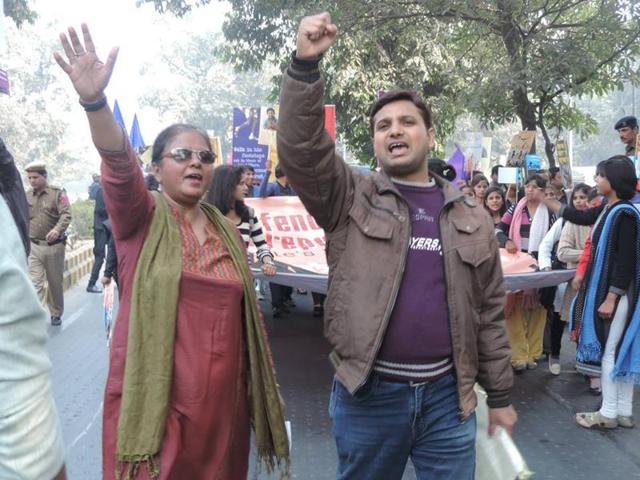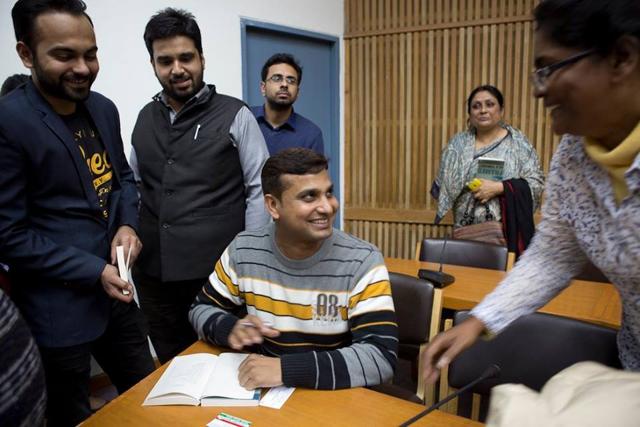How terror accused Aamir struggled for 14 years to prove his innocence
Mohammad Aamir Khan’s memoir of the 14 years he spent in prison is the story of institutionalised discrimination against minorities in Indian jails and of the numbness atrophying Indian society.
On the night of 20th February 1998, Mohammad Aamir Khan (20) from Old Delhi’s Azad Market area left his home for prayers. He returned 14 years later after having spent 14 years in prisons in Delhi and Ghaziabad and facing trial in 18 bomb blast cases. He was eventually acquitted in all of them. ‘Framed As a Terrorist: My 14 Year Struggle To Prove My Innocence’ is an account of the events that led to Aamir’s arrest, his days in prison, and how the experience has shaped him.

Since his release, various civil society groups have expressed solidarity with Aamir and are helping him financially and morally. He worked with Anhad, the Delhi-based NGO run by activist Shabnam Hashmi, for four years. Human rights activist and writer Nandita Haskar knew Aamir’s story and proposed the idea of a book. The two held many sittings over three months at Haskar’s South Delhi apartment and by September 2014, the book comprising Aamir’s words penned by Haskar, was ready.
Framed… is much more than a prison memoir dwelling on jail life including torture, protocols, terminology, rapes, mafias and the bribe culture that thrives inside prisons. Framed… can be the story of any of the terror accused, whose arrests make news every year before Republic Day and Independence Day. The names that crop up could be Basheer, Abdul or Majeed instead of Aamir. Names change; the narrative remains the same: peculiar circumstances of arrests, impunity enjoyed by the police, lack of legal aid for under-trials, neverending trials, social boycott of the family of the accused, and a growing sense of despair.
In November 1997, a man Aamir remembers as ‘Guptaji’ befriended him outside Delhi’s Pakistan Embassy and gave him an assignment, which he was to finish while visiting his sister in Pakistan. On Aamir’s failure to execute the task, Gupta and his aides tortured him, and eventually made him the accused in 18 bomb blast cases in and around Delhi.

The authors document institutionalised discrimination against minorities in Indian jails. A fellow inmate attacks Aamir calling him deshdrohi (traitor); an official of the Haryana Crime Investigation Department tells Aamir that the torture equipment is from his era, the Mughal times; a policeman at Delhi’s Roop Nagar police station assuring Aamir of his conviction based on his religion.
The chapter entitled ‘Context’ puts this hatred in perspective. The author traces its roots to 1912 when the Mughal capital Shahjahanabad became Old Delhi compared to New Delhi, the imperial capital of the British. The author notes that the newly constituted police force had Gujjars and Jats and promoted stereotypical images of Hindus and Muslims as two separate and antagonistic communities. Then came the violence of Partition after which Muslims found themselves ghettoized within narrow by-lanes. Subsequent events such as the Shah Bano case in 1985, the Salman Rushdie controversy, and the Babri Masjid demolition of 1992, left Indian Muslims insecure. This is as much the story of the current state of Muslims in India as it is of the transformation of a beautiful city into a ‘commercial slum’ as the author describes Old Delhi.

The authors also document how numerous trials and interactions with lawyers and fellow inmates made Aamir aware of the criminal justice system and his rights as an under-trial.
Haskar poignantly captures, through Aamir’s eyes, how the outside world had changed in all the years that he had been imprisoned: the first time he sees a mobile phone in the hands of an inmate; his fascination at the sight of a big building he later discovers is a shopping mall; and the realisation that there were now multiple television channels as opposed to just Doordarshan.
The passage when Aamir walks out as a free man in January 2012 shows how an activity such as crossing the road on your own can feel like a privilege for someone who has spent 14 years behind bars.
Aamir’s ordeal has been woven with the stories of the two women who have stood by him all these years: his mother Memoona Begum and Alia Khan, his beloved whom he married after his acquittal. After Alia’s father rejected the proposal, Aamir and a delegation of well-wishers, including lawyers and activists, met the older man and convinced him that the marriage should go ahead.
At its core, Framed… is the story of how numb Indian society has become. How many Aamirs will it take for us to speak up against the abuse of the criminal justice system?





